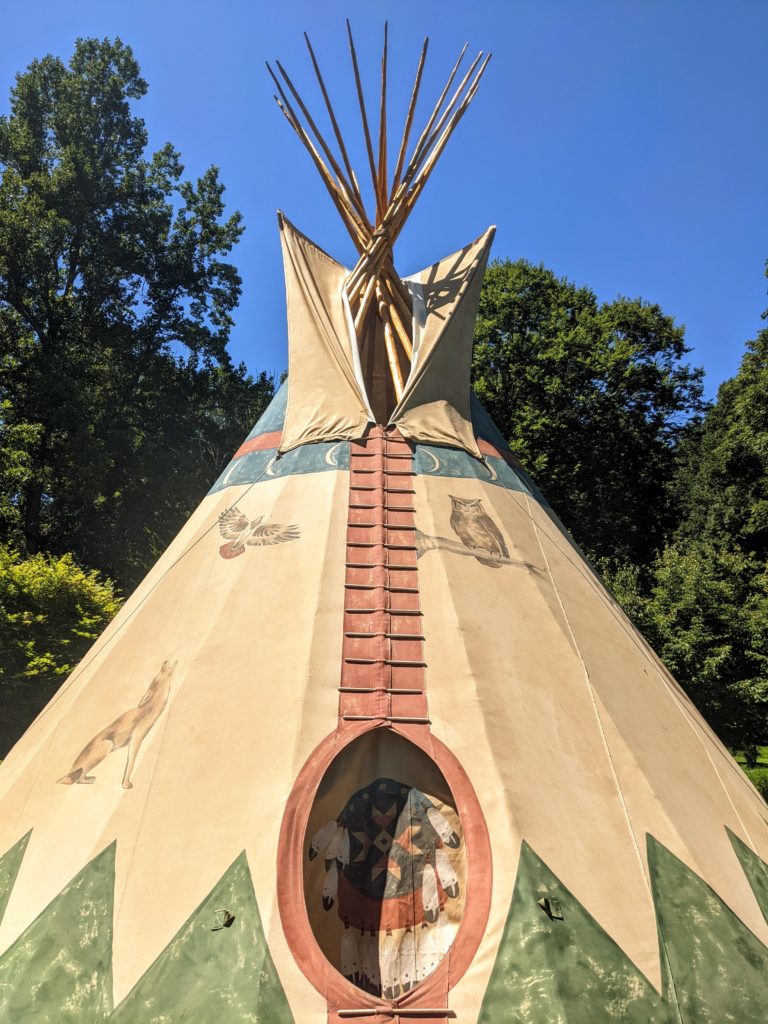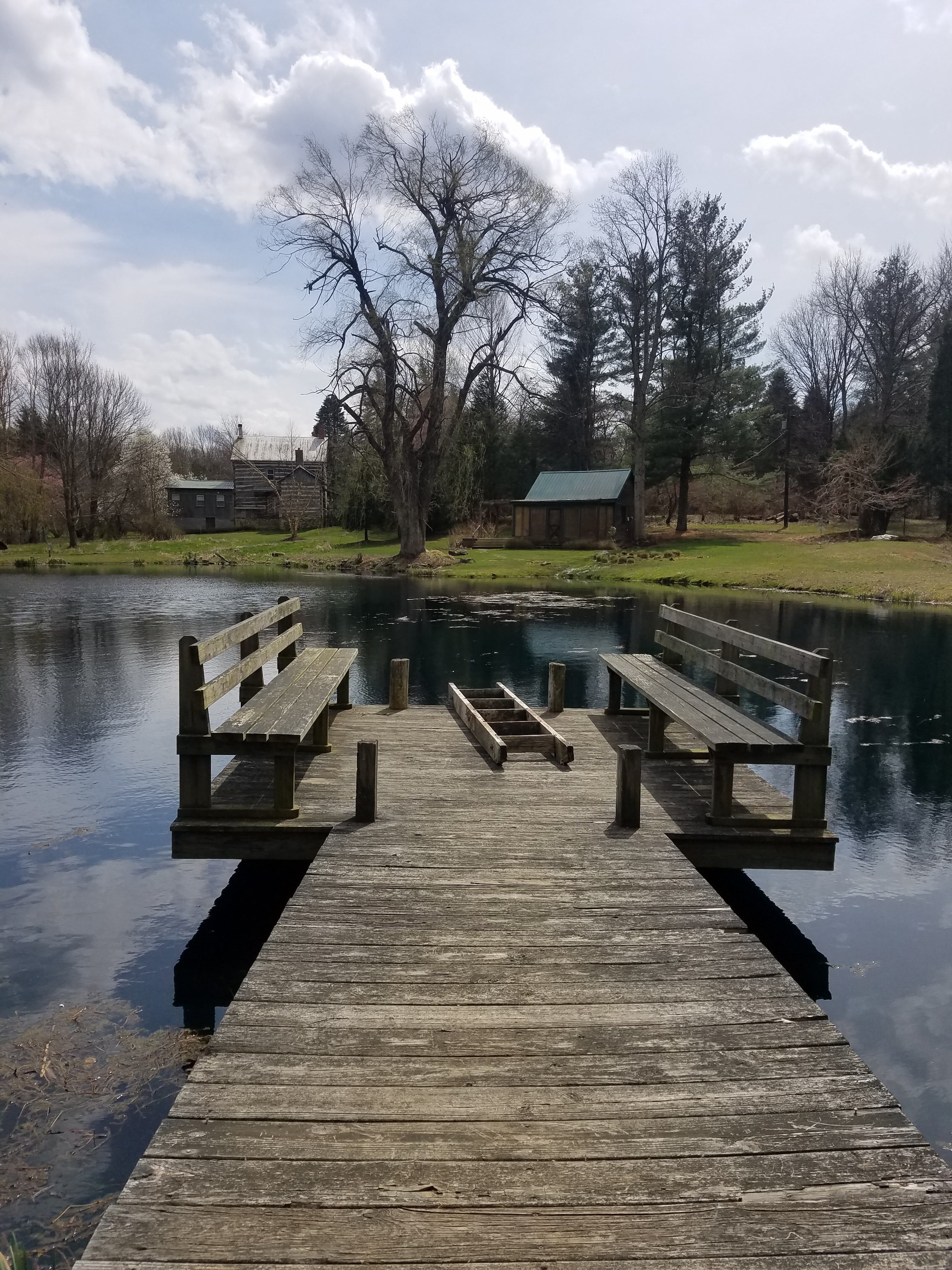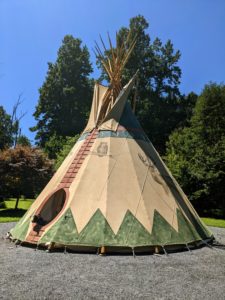 We are so excited to announce that our tipi is up in the arboretum! This is such an exciting addition to the farm – a place for groups of all ages to gather – for meetings, overnights, fires, and more. We are still working on the interior flooring to make this space more cozy and welcoming, but it is well on its way to becoming one of the main hubs of the farm!
We are so excited to announce that our tipi is up in the arboretum! This is such an exciting addition to the farm – a place for groups of all ages to gather – for meetings, overnights, fires, and more. We are still working on the interior flooring to make this space more cozy and welcoming, but it is well on its way to becoming one of the main hubs of the farm!
This tipi comes to us from Nomadics Tipi Makers. We carefully selected where to buy our tipi based on the values of the company. So here’s a bit about Nomadics Tipi Makers’ mission and values:
- All artwork is done by Native American artists living in the Pine Ridge Reservation, who receive 100% of the art fee
- For each tipi pole sold, they pay Redcloud Renewables (Native-American owned) to plant one tree on the Pine Ridge Reservation
- Provide college scholarships to young, native women
- Major donations to Native American groups and movements
- Certified by Green America based on
- 100% organic cotton for all fabrics
- less than 1% waste reduction
- recycled material projects
- minimum wage of $15/h, 6% of 401(k) contribution
- sustained support of Native Americans in forms of shelter, education, and legal service programs.
- Certified by 1% for the Planet, a pledge to donate 1% of sales to environmental organizations.
- For more details, visit: https://tipi.com/we-care/
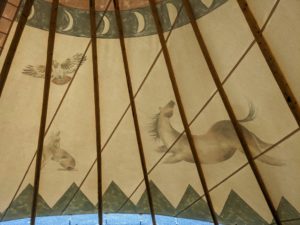 We see the tipi as a valuable addition to the farm for many reasons. We especially enjoy it as a means of time travel, a ‘living artifact,’ by which we can enjoy and connect with nature as Native American did. As such, we start each group’s visit to the tipi with this historical context, adapted based on age level:
We see the tipi as a valuable addition to the farm for many reasons. We especially enjoy it as a means of time travel, a ‘living artifact,’ by which we can enjoy and connect with nature as Native American did. As such, we start each group’s visit to the tipi with this historical context, adapted based on age level:
The word tipi comes from the Lakota word thipi, which translates to “a dwelling” or “they dwell.” Nomadic tribes that lived on the plains had tipis as portable homes to move with the bison herds. The woman of the family was in charge of the tipi in all forms – making it, putting it up, taking it down, and maintaining it. It apparently only took 30 minutes for her to erect it solo! Her only help was from dogs, who helped to move the tipi from one location to the next.
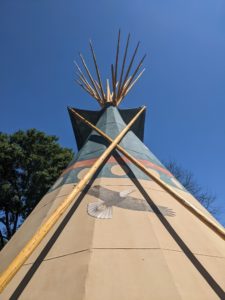 Tipis were painted to reflect the history of the family who lived in it. The base of the tipi was meant to reflect the earth on which we live. Our tipi is painted with ‘many mountains’ to represent our place here in the Catoctin Mountains. The top part of the canvas honors father sky. Ours features a ‘Morning Star,’ which is unpainted so that it can glow with the fire inside. Below the star, we have two solid bans, which are traditionally called the ‘buffalo trail.’ Our top band is terracotta and the bottom band is blue with unpainted moon phases. The poles, which extend a ways past the top of the canvas, are meant to connect the earth to the spirit world.
Tipis were painted to reflect the history of the family who lived in it. The base of the tipi was meant to reflect the earth on which we live. Our tipi is painted with ‘many mountains’ to represent our place here in the Catoctin Mountains. The top part of the canvas honors father sky. Ours features a ‘Morning Star,’ which is unpainted so that it can glow with the fire inside. Below the star, we have two solid bans, which are traditionally called the ‘buffalo trail.’ Our top band is terracotta and the bottom band is blue with unpainted moon phases. The poles, which extend a ways past the top of the canvas, are meant to connect the earth to the spirit world.
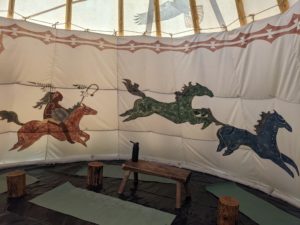 The middle region of the canvas should represent the experiences of the family who lives there. On the exterior, we have chosen animals who live in our area, including a deer, eagle, horse, coyote, redtail hawk, and owl. On the interior, we have horses running, sunshine, and a raven. The door is painted with a classic Plains-style shield with a Sioux/Arapaho center design.
The middle region of the canvas should represent the experiences of the family who lives there. On the exterior, we have chosen animals who live in our area, including a deer, eagle, horse, coyote, redtail hawk, and owl. On the interior, we have horses running, sunshine, and a raven. The door is painted with a classic Plains-style shield with a Sioux/Arapaho center design.
All of this art is designed and placed at the discretion of the artist. As mentioned above, the artists are all native people living on the Pine Ridge Reservation in South Dakota. This arrangement brings money to the poorest county in the United States, keeps this fresco art form alive, and contributes to the authenticity of the tipi.
We are so excited to share our tipi with all of our farm visitors!
